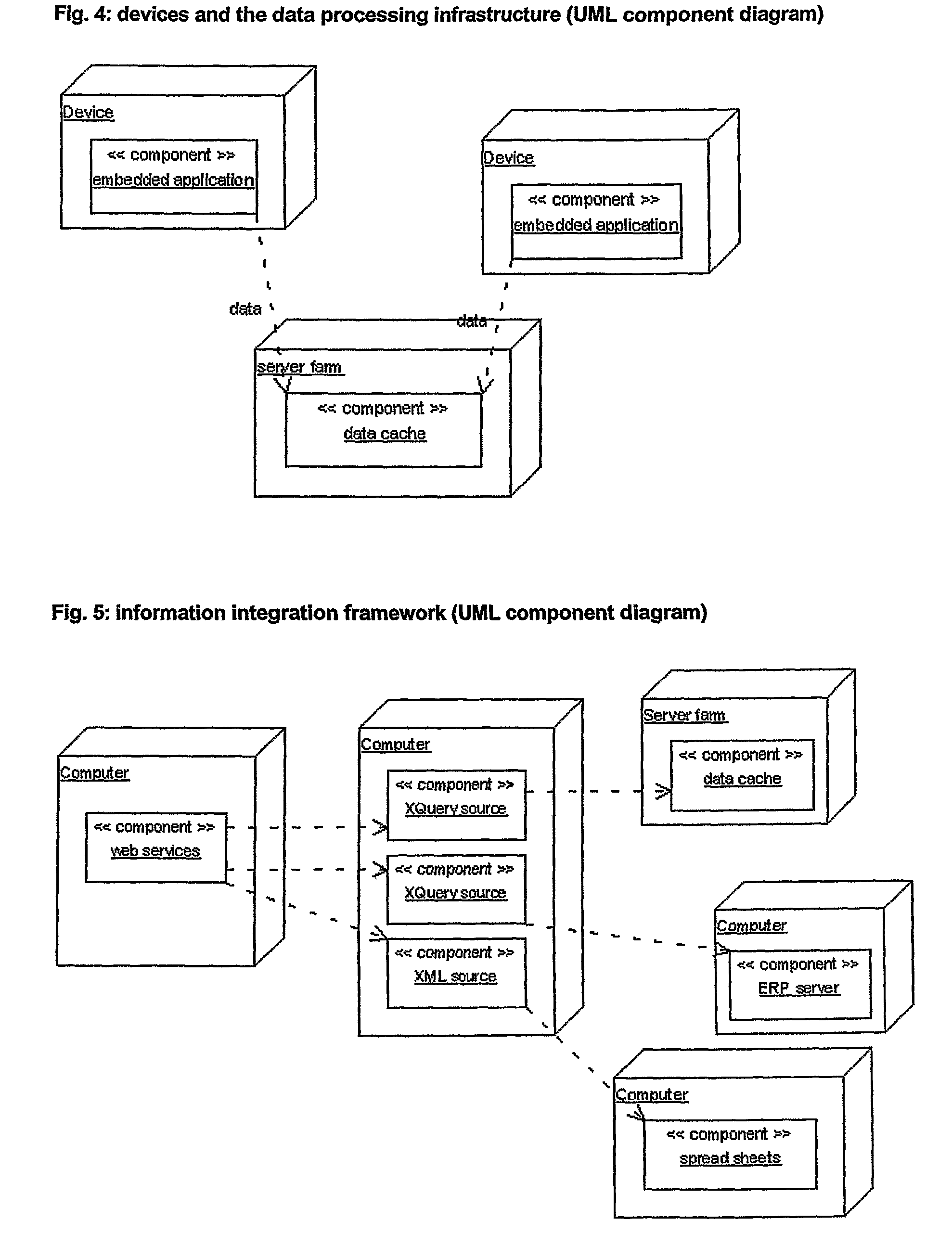Distributed asset management system and method
a technology of distributed assets and management systems, applied in the direction of software deployment, program control, instruments, etc., can solve the problems of system failure, system failure to work as expected, system sensitivity to network failures, etc., to increase scalability and resilience to network failures, and maximize processing power and storage capacity.
- Summary
- Abstract
- Description
- Claims
- Application Information
AI Technical Summary
Benefits of technology
Problems solved by technology
Method used
Image
Examples
example of embodiment
Context
[0105]The system and method described by the present invention can, for example, be used to implement a solution for determining the costs of transported goods in distribution supply chains. Such a solution combines data about vehicles, about goods that are often kept in warehouses for a given time period prior to being delivered, and about all the activities surrounding the delivered goods. The solution's purpose is to help determine the cost of transported goods, but can also help derive various other data about vehicle usage, driver productivity, etc.
[0106]The solution is inspired by fleet management solutions that are notably used in the context of pick-up and delivery, by private or public vehicle fleets, in order to carry given goods from a warehouse to specific destinations. Such solutions mainly rely on a dispatching infrastructure, composed of software, individuals and business processes. The dispatching infrastructure's duty is to assign delivery itineraries (or so ...
PUM
 Login to View More
Login to View More Abstract
Description
Claims
Application Information
 Login to View More
Login to View More - R&D
- Intellectual Property
- Life Sciences
- Materials
- Tech Scout
- Unparalleled Data Quality
- Higher Quality Content
- 60% Fewer Hallucinations
Browse by: Latest US Patents, China's latest patents, Technical Efficacy Thesaurus, Application Domain, Technology Topic, Popular Technical Reports.
© 2025 PatSnap. All rights reserved.Legal|Privacy policy|Modern Slavery Act Transparency Statement|Sitemap|About US| Contact US: help@patsnap.com



